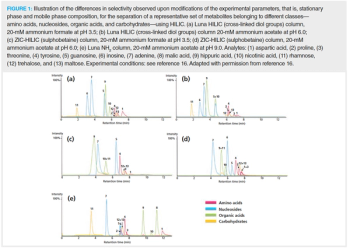Multidimensional chromatography, or comprehensive chromatography, is a well-established technique for the analysis of complex mixtures. However, the technique is often perceived as highly complex and difficult to put into practice for routine applications. Nonetheless, the technique provides exceptional potential for addressing challenging separations. The addition of a dilution factor allows multidimensional chromatography to provide a high level of flexibility and selectivity. The dilution effect is achieved by using a column chemistry format compatible with large flow rates, which now offers the option of large volume injection without volume or mass overload issues. This novel solution can reduce or eliminate the need to add a solvent exchange step, such as evaporation or reconstitution, which significantly reduces the most time-consuming part of the sample preparation process.































